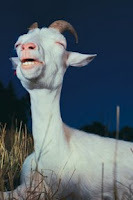I don’t want to write this blog post.
It’s the one where I tell you how I have failed miserably and completely given up on the Newbery Challenge. It’s the one where I tell you that I never even made it through the first book on the list. And it’s the one where I make a new resolution to never make a resolution involving the reading of a book titled, THE STORY OF MANKIND.
In case you missed it long ago, when I actually still held a sliver of hope that I could complete it, here is a delightful past blog post on the book that killed my Newbery Challenge:
ON GOAT-SINGERS AND ILLITERATE KNIGHTS

I want to be here right now telling you how great this Newbery Challenge is going. How I am enjoying every word written by our brilliant, award-winning, children’s writing forefathers. But I am struggling. To be on track, I should be at least on book 6. But as it stands, I am halfway through both book 1 and book 2. See, I was having a hard time with the first book, as I told you about here. So I thought, I’ll get book 2, start it, then make myself read a few chapters of book 1, and then as a reward, I can read a few chapters of book 2. Well, turns out that book 2 wasn’t quite as compelling as I had hoped.
So, in an effort to re-motivate myself, I am going to focus on the positive, and tell you a few things that I am loving about THE STORY OF MANKIND by Hendrik Willem van Loon:
Okay, dear Hendrik, here we go…
I can’t quite figure out how this dude decided to write this book. Oh, to have been a fly on the wall as he pitched the idea to his editor…”I have a great idea for a book! I will write about the ENTIRE history of the world, starting from darkness all the way to present-day! One chapter for every 10,000 years or so should work, right?”
I can definitely say that I have learned some things about history that I didn’t know before. You probably already knew them, because I have such smart friends. But here is a sampling:
- The Egyptian pyramids were originally cemeteries. They were forced to build them out in the desert because they ran out of space. But the desert was full of wild animals and robbers, so they started to build small mounds of stones on top of them so they wouldn’t be disturbed. Of course, the richest Egyptians felt they should have the biggest piles of rocks. So in the good old-fashioned spirit of competition, these mounds got bigger and bigger until they became the pyramids that we know today. The largest one was built by King Khufu, and it was over five hundred feet high and covered more than 13 acres of desert.
- Greek theater has its origins in parades that were held to honor Dionysos, the god of wine. This particular god was thought to live in the vineyard among a merry band of satyrs, who were half man, half goat. They would commemorate Dionysos each year by wearing goat-skins and dancing around in public parades, hee-hawing. They were called goat-singers, or “tragos-oidos.” At first these singing goats were entertaining enough, but the people of Greece soon grew tired of the bleating and called for something more. So the goats began to talk, and act out scenes, and out of these tragos-oidos, the Greek tragedy was born.
- The knights of the early Middle Ages could neither read nor write. It was not considered manly.
- The explorers of the late 1400s and early 1500s had a lot of trouble recruiting crews to work their ships, because of the high mortality rate out on the sea. They would take whoever they could get, and that meant that, “Famous discoverers like Magellan and Columbus and Vasco da Gama traveled at the head of crews that were almost entirely composed of ex-jailbirds, future murderers and pickpockets out of a job.”
Informative? Yes. A page-turner? No. It is a book filled with interesting tidbits, but Mr. Van Loon himself tells us that reading this book will be quite an undertaking. On page 168, he says, “I do not expect you to catch the meaning of what I write without re-reading this chapter a number of times.” That’s comforting. And on page 240 he says, “I wish I could make this book a thousand pages long.” Oh Hendrik, I think the 500 plus you wrote is quite enough. And if I ever actually make it to the 1930s (when this book was written, and presumably, the end), I think a parade will be in order. Anyone have an old goat-skin I can borrow?
————————————————————————————————————
Needless to say, there will be no celebratory goat parade. Darn. I was really looking forward to having a glass of wine with that merry band of satyrs.
Leave a Reply